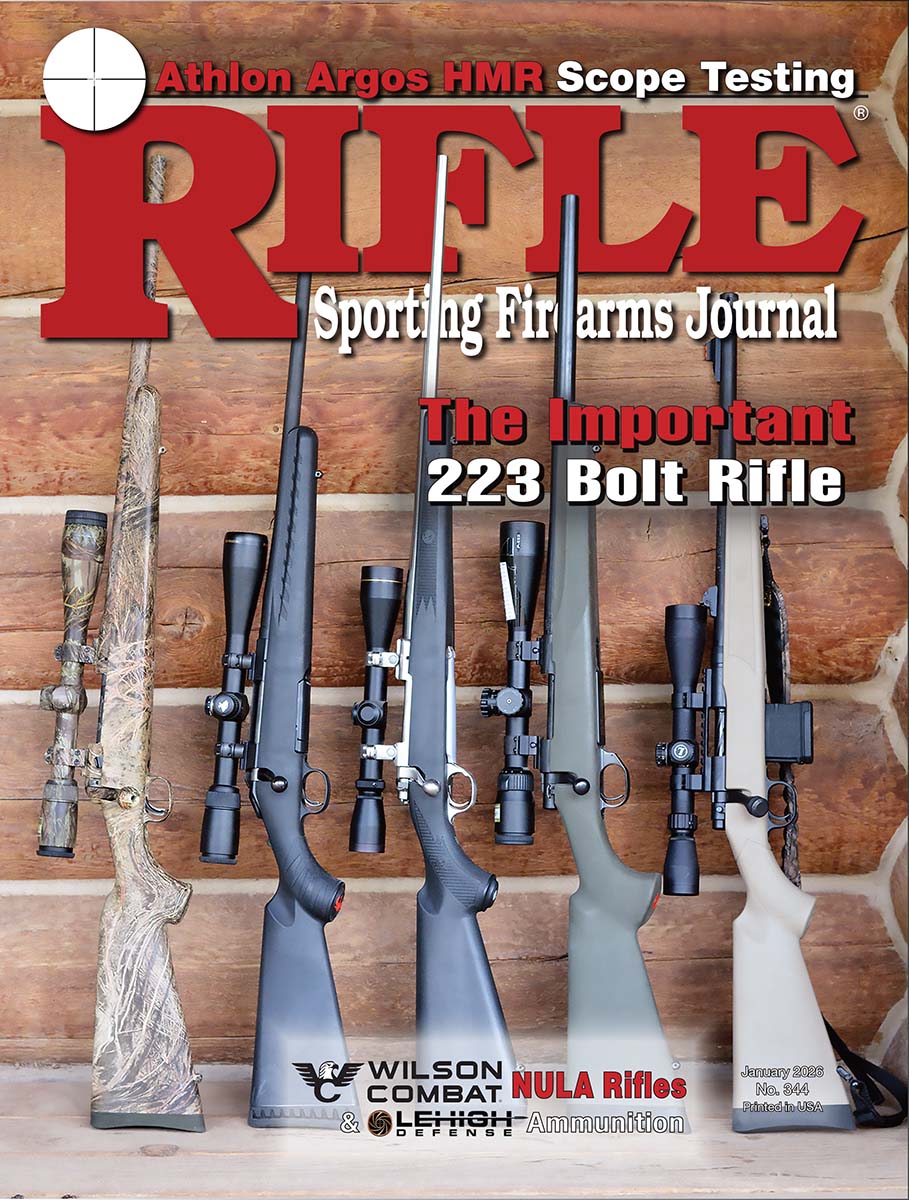300 Magnums
.30-Caliber Versatility
feature By: Brian Pearce | January, 26

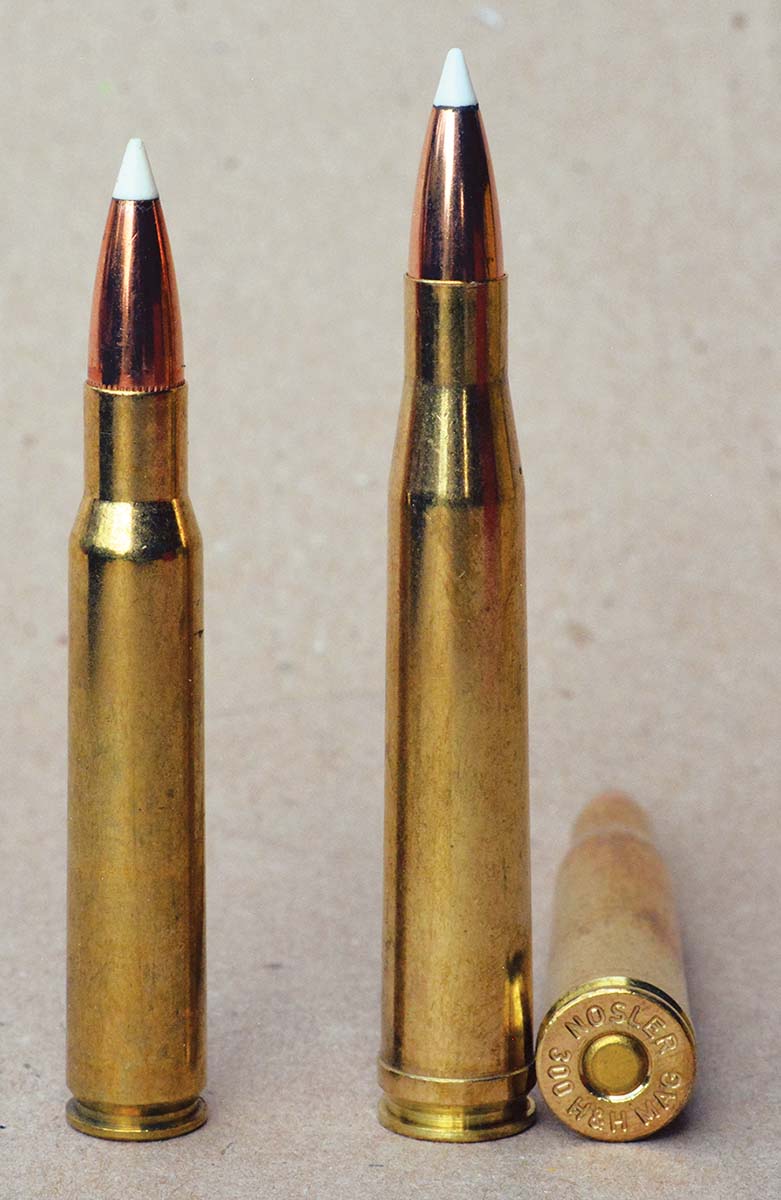

The first successful commercial .30-caliber magnum was introduced by Holland & Holland (H&H) around 1920 and eventually became known as the 300 H&H Magnum. While it enjoyed popularity in Europe and with custom rifle builders in the U.S., it did not become widely popular until Winchesteroffered it in the Model 70 beginning in 1936. Using a custom-built rifle chambered in 300 H&H Magnum, Ben Comfort won the prestigious 1,000-yard Wimbledon Cup Match at Camp Perry, Ohio, in 1935, which brought considerable fame to the cartridge. Sales were strong despite the Great Depression.
Long-range riflemen and big-game hunters discovered that a .30-caliber magnum offered a remarkable blend of power, flat trajectory and versatility that few cartridges could match without producing excessive recoil. Today, the virtues of the .30-caliber magnums have been further enhanced with high-tech bullets designed to maximize performance on big game, while other bullets cater to ultra long-range target shooters. Most modern .30-caliber magnums offer even greater velocities than the original 300 H&H, though not always, and designers have focused on improving accuracy and powder-burning efficiency. Barrel twist rates on some cartridges have been increased to accommodate heavyweight bullets featuring ultra-low drag and high ballistic coefficients.
To state that the popularity of .30-caliber magnum cartridges is huge among modern riflemen would be a gross understatement. Currently, there are at least ten options for big-game hunters and long-range shooters to choose from. As strange as this may sound, they are each distinctly different and do not necessarily compete with each other, although some do. While several interesting proprietary designs exist, let us take a closer look at industry-standardized (SAAMI) cartridges.
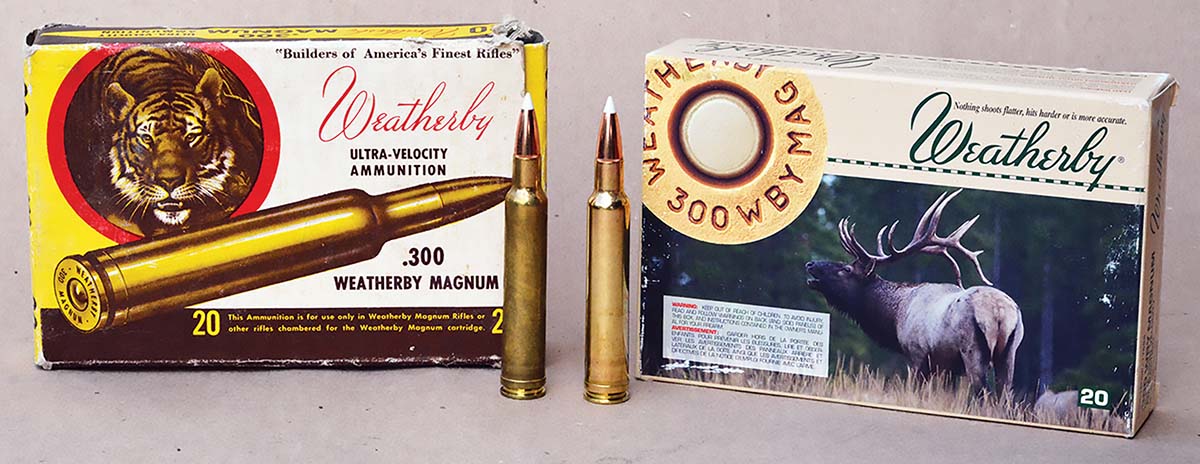
The 30 Newton (1913) and 300 H&H Magnums (1920)

The 30 Newton was introduced around 1913 and was far ahead of its time. It was a large-capacity, beltless case with a head diameter just slightly smaller than the 375 Ruger case and featured a 23-degree shoulder. Winchester-Western offered factory loads between the world wars that listed a 180-grain bullet at 2,860 feet per second (fps). For various reasons, it did not sell well, but it should have.
The 300 H&H Magnum was first offered around 1920 as “Holland’s Super 30” and soon received its familiar name. It was based on the 375 H&H case, featuring a significant taper and a modest 8-degree shoulder that failed to offer positive headspace control. As a result, the case carried a belt for positive headspace control, the same as the 375 H&H. The case measured 2.850 inches long and had an overall length of 3.600 inches, which made it a long-action cartridge and unsuitable for 30-06-length actions. Ballistics have changed over the past century, but today it is generally loaded with 180-grain bullets at around 2,900 fps. Handloaders can usually reach 3,100-plus fps from period rifles that were commonly fitted with 26-inch barrels.
My personal experience with the old H&H dates back to the 1970s and is significant. I have taken many deer, elk and antelope with it and even used a pre-’64 Model 70 on an African plains-game population control hunt in which it accounted for more than two dozen head of game. In spite of more modern designs that boast a sharper shoulder, beltless case and other technical improvements, I have found that with load development, the cartridge works wonderfully. In short, it is accurate, easily
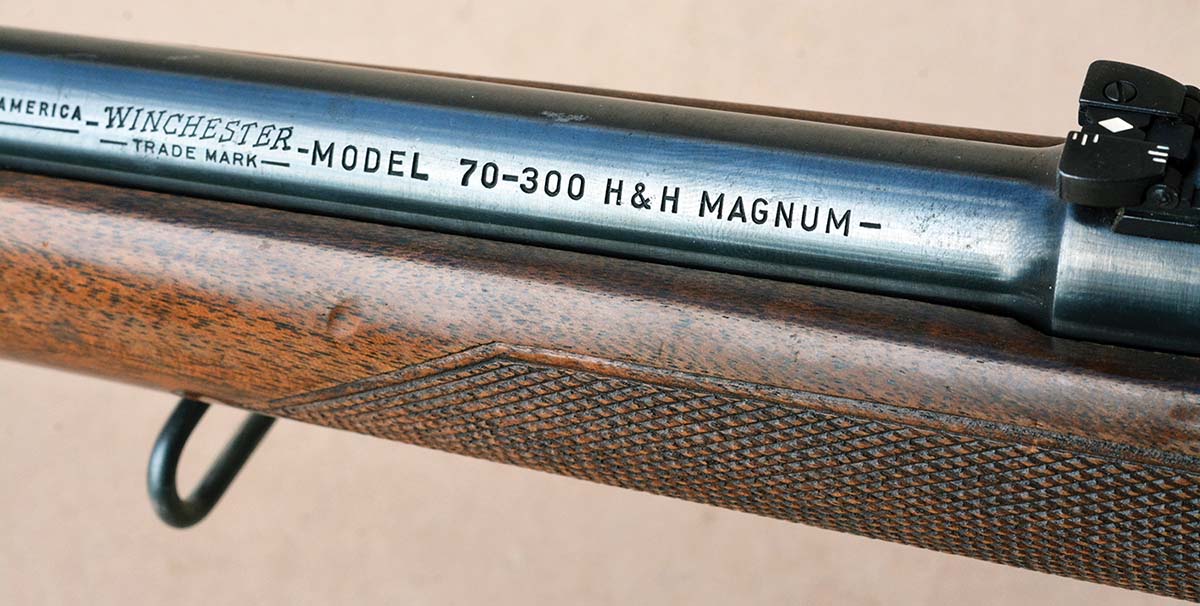
No standard production rifles are currently chambered for the 300 H&H, but ammunition is still offered by Winchester and Federal. There are enough guns around that it is unlikely to become obsolete anytime soon. Regardless, it played a significant role in paving the way for subsequent .30-caliber magnum rifles and cartridges.
300 Weatherby Magnum (1943 and 1994)
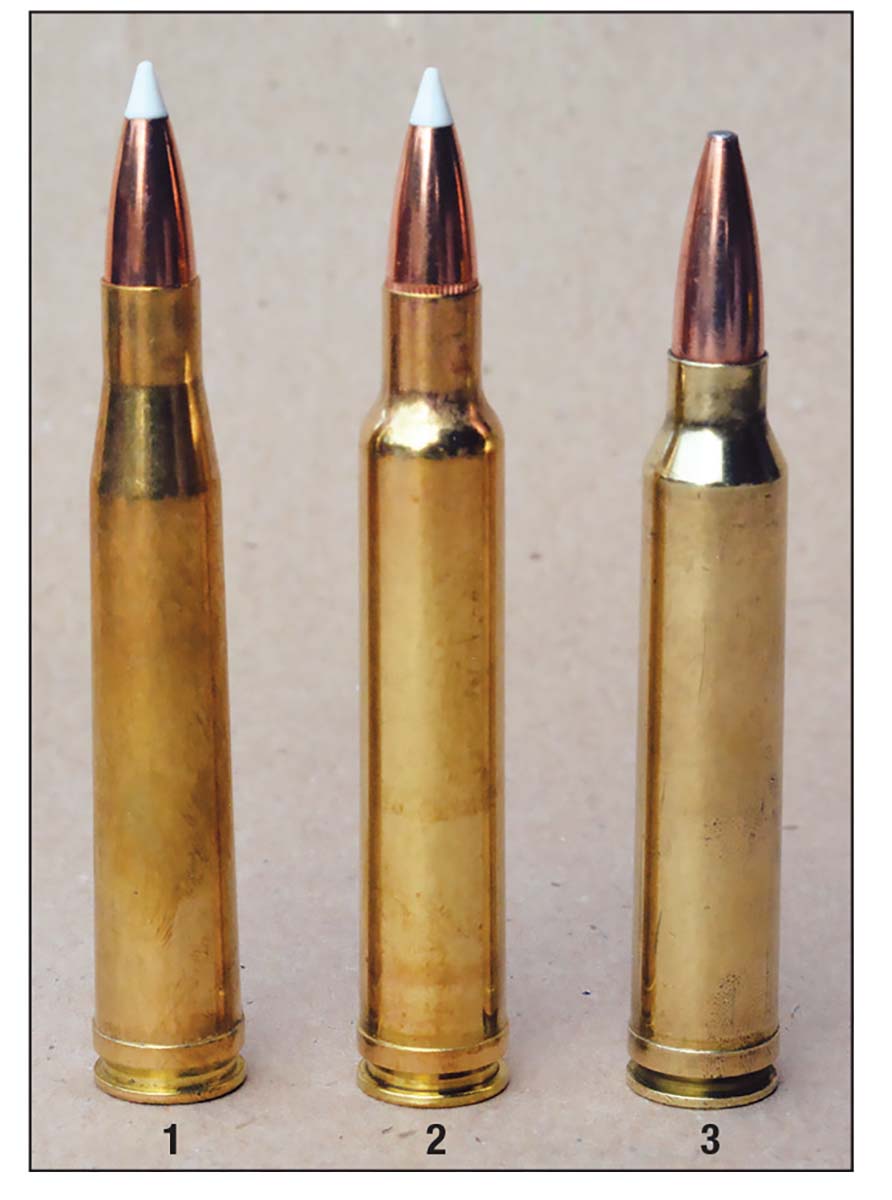
During World War II, Roy Weatherby began experimenting with the 300 H&H case by blowing it out to hold significantly more powder and achieve ultra-high velocities. The 300 Weatherby Magnum was based on the belted magnum case and required a 3.600-inch action length. It featured Weatherby’s unique double-radius shoulder. While published velocities have varied over the decades, today it is generally listed to push a 150-grain bullet at about 3,540 fps, a 165-grain at 3,390 fps, a 180-grain at 3,250 fps and a 200-grain at 3,060 fps. Its reputation as a big-game hunting cartridge soon grew to near-legendary status worldwide. Movie actor John Wayne hunted with one and helped promote it. Initially, Weatherby built custom rifles based on Mauser 98 and Winchester Model 70 actions, but by 1957, he had designed the big Mark V action that became the primary rifle for his big 300.
The 300 Weatherby became Roy’s best-selling cartridge for many decades and remains widely popular today. Initially, it was only offered as a proprietary round, but in 1994, it was introduced to SAAMI (Sporting Arms and Ammunition Manufacturers’ Institute) and became a standardized cartridge, prompting domestic rifle manufacturers, including Ruger, Remington and Winchester, to offer guns chambered for it. Weatherby also offered a competitively priced Vanguard that broadened its appeal. In addition to Weatherby, other ammunition companies began offering loads, including Hornady, Nosler and Remington.
300 Winchester Magnum (1963)

Beginning in 1956, Winchester introduced the 458 Winchester Magnum, followed by the 264 and 338 Magnums in 1958. All were based on the belted magnum case but were “short action” in length, which at that time meant 30-06 length actions with an overall length of 3.340 inches. Anticipation for a 30-caliber version was high, but it did not immediately appear. In 1960, Norma designed the 308 Norma Magnum (not to be confused with the modern 300 Norma Magnum) and tried to beat Winchester to the punch. The 308 Norma was based on the belted magnum case and had an overall length of 3.340 inches. By 1961, Norma offered loaner chamber reamers to gunsmiths to convert 30-06 rifles to 308 Norma, supplied ready-to-load brass with handloading data, and soon began importing factory loads. It was a good cartridge.
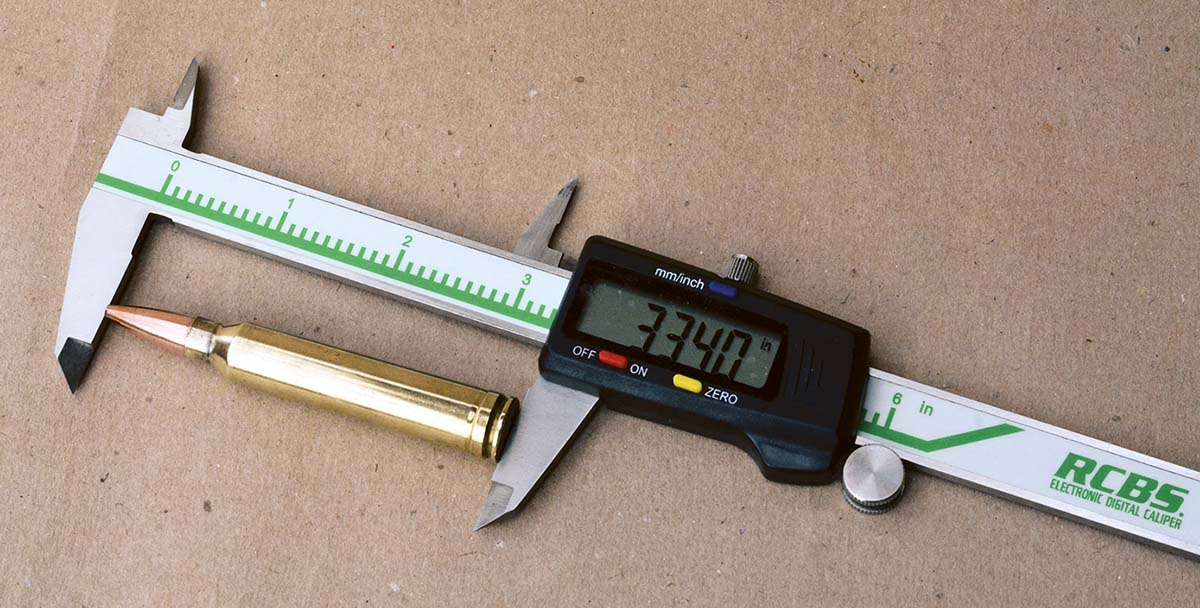
Another notable wildcat was the 30-338, based on a necked-down 338 Winchester, and many shooters anticipated that Winchester would eventually offer that round.
Both cartridges gained momentum, but in 1963, Winchester responded with the 300 Winchester Magnum, which differed from both predecessors. Winchester moved the shoulder forward (from the 338/264 layout) and retained a 25-degree shoulder for greater powder capacity, which in turn offered greater velocities. With Winchester’s market clout, this spelled the death knell for the 308 Norma and the 30-338 wildcat.

The 300 Winchester is by far the most popular of all the .30-caliber magnum cartridges. Many designers and manufacturers have predicted it would be dethroned, but that has not happened. It is more popular today than ever in its 62-year history. The cartridge has found huge favor with big-game hunters and long-range target shooters and is even used by the U.S. military as a sniper
cartridge.

Virtually every U.S. ammunition manufacturer offers several loads to increase its versatility. Roughly speaking, it will push a 150-grain bullet to around 3,260 fps, a 180-grain to about 2,950 fps and a 200-grain to approximately 2,825 fps. It has enough case capacity to handle even heavier bullets with ultra-high ballistic coefficients and low drag. The 300 Win Mag offers a wonderful balance between power, flat trajectory and long-range capability without excess recoil. Ammunition is available worldwide, which is useful for traveling hunters whose ammunition sometimes goes missing in airline travel. This fact alone makes it especially practical. The 300 Winchester Magnum is the standard by which others are compared, and its popularity does not appear to be waning.
30-378 Weatherby Magnum (1959 and 1996)


At the request of the U.S. military for an ultra long-range and antimaterial cartridge, Roy Weatherby necked down the large 378 case to .30 caliber in 1959. Even though super slow-burning propellants were not available at that time, he still reached 5,000 fps with lightweight bullets and later reported velocities near 6,000 fps. The cartridge was not offered commercially at first, but it was used in wildcat form to set a world record as the first cartridge to group ten shots into 10 times at 1,000 yards, a record that would stand for around 30 years. Remarkably, nine of those ten shots grouped into 3.125 inches.
Weatherby formally introduced the 30-378 to SAAMI in 1996 and began chambering the Mark V rifle for it. Weatherby lists a 165-grain bullet at 3,500 fps, a 180-grain at 3,420 fps and a 200-grain at 3,160 fps.

300 Remington Ultra Magnum (1999)
The 300 Remington Ultra Magnum (RUM) was introduced by Remington in 1999 and was a game-changing cartridge. It was based loosely on the large-capacity 404 Jeffery case, which was beltless, featured a rebated rim and had a wider body than the belted magnum case. To handle higher pressures than the 404 case was designed for, the case body was widened and the brass thickened, along with other technical changes. Remington was influenced by a similar cartridge designed by Canadian firm North American Shooting Systems and even purchased brass from them for testing, as did Dakota Arms when they developed the 300 Dakota.
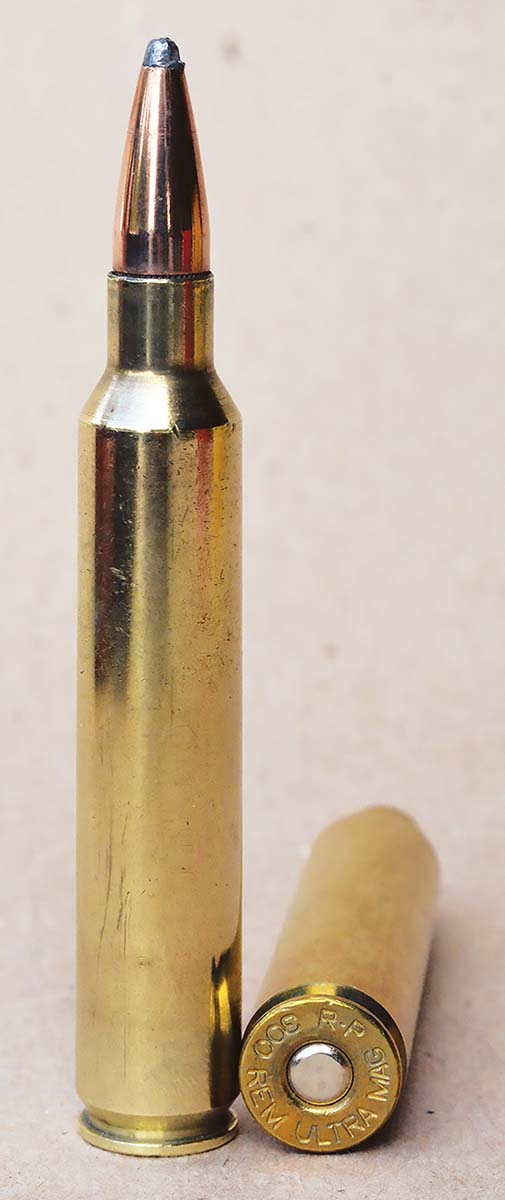

The end result was a commercial 300 magnum cartridge chambered in rifles and offered with factory loads that the average working man could afford. The 300 RUM case measured 2.850 inches, featured a 30-degree shoulder and had an overall cartridge length of 3.600 inches, requiring the 375 long action. It was loaded to a SAAMI maximum average pressure of 65,000 pounds per square inch (psi). The rebated rim allowed it to function readily in the countersunk magnum bolt face of the Remington Model 700. RUM ballistics are impressive, with a 150-grain bullet at about 3,450 fps, a 180-grain at about 3,250 fps and a 200-grain at about 3,032 fps. Many shooters felt the recoil, which was the number one complaint among average hunters, so Remington began offering three levels of power in their factory loads. Nonetheless, the cartridge was modern, very well received and became the parent case for many others.
It is noteworthy that 1999 preceded the wave of modern long-range, high ballistic coefficient (BC) bullets used today. As a result, the standard barrel twist rate tended to be 1:10 inches rather than the faster twists now common. Regardless, the 300 RUM became widely popular.

300 WSM, 300 RSAUM and 300 RCM (2001, 2002 and 2007)
Remington developed the 300 Remington Short Action Ultra Magnum (RSAUM) simultaneously with the 300 RUM and was ready to introduce it in 1999. Marketing chose to debut the larger cartridge first, with plans to introduce the RSAUM later. Winchester, however, beat Remington to market with the 300 Winchester Short Magnum (WSM) in 2001. Remington introduced the 300 RSAUM a few months later in 2002, but the Winchester round had already received the lion’s share of press and was on dealer shelves, so the Remington version received little recognition. While the two rounds are ballistically similar, the WSM had a slight velocity advantage, typically 10 to 40 fps, leading many shooters to prefer it. Which one is better is truly debatable.

Both the WSM and RSAUM are designed to function in a 308-Winchester length action (or slightly longer) and measure about 2.860 and 2.825 inches overall, respectively. The WSM case head is just slightly larger than the RSAUM, and the shoulder angles are 35 and 30 degrees. Both are loaded to 65,000 psi. The WSM typically lists a 150-grain bullet at 3,300 fps and a 180-grain at 2,970 fps. The RSAUM lists a 150-grain at about 3,200 fps and a 180-grain at about 2,960 fps.

The idea behind the short magnums was to obtain 300 Winchester Magnum performance in a lightweight, short-action rifle with a 24-inch barrel. The short powder column produced low extreme spreads, provided excellent accuracy, reduced powder charges, burned efficiently in the chamber and reduced throat erosion.
After the introduction of the 375 Ruger in 2007, which used a new beltless case smaller in diameter than the Ultra Mag or WSM cases and featured a rim the same diameter as the head (not rebated), Ruger and Hornady teamed to produce the 300 Ruger Compact Magnum. It was based on the 375 Ruger case, had an overall length of 2.840 inches, featured a 30-degree shoulder and pushed a 150-grain bullet at 3,310 fps, a 165-grain at 3,130 fps and 178- to 180-grain bullets at about 2,900 fps from 24-inch barrels.

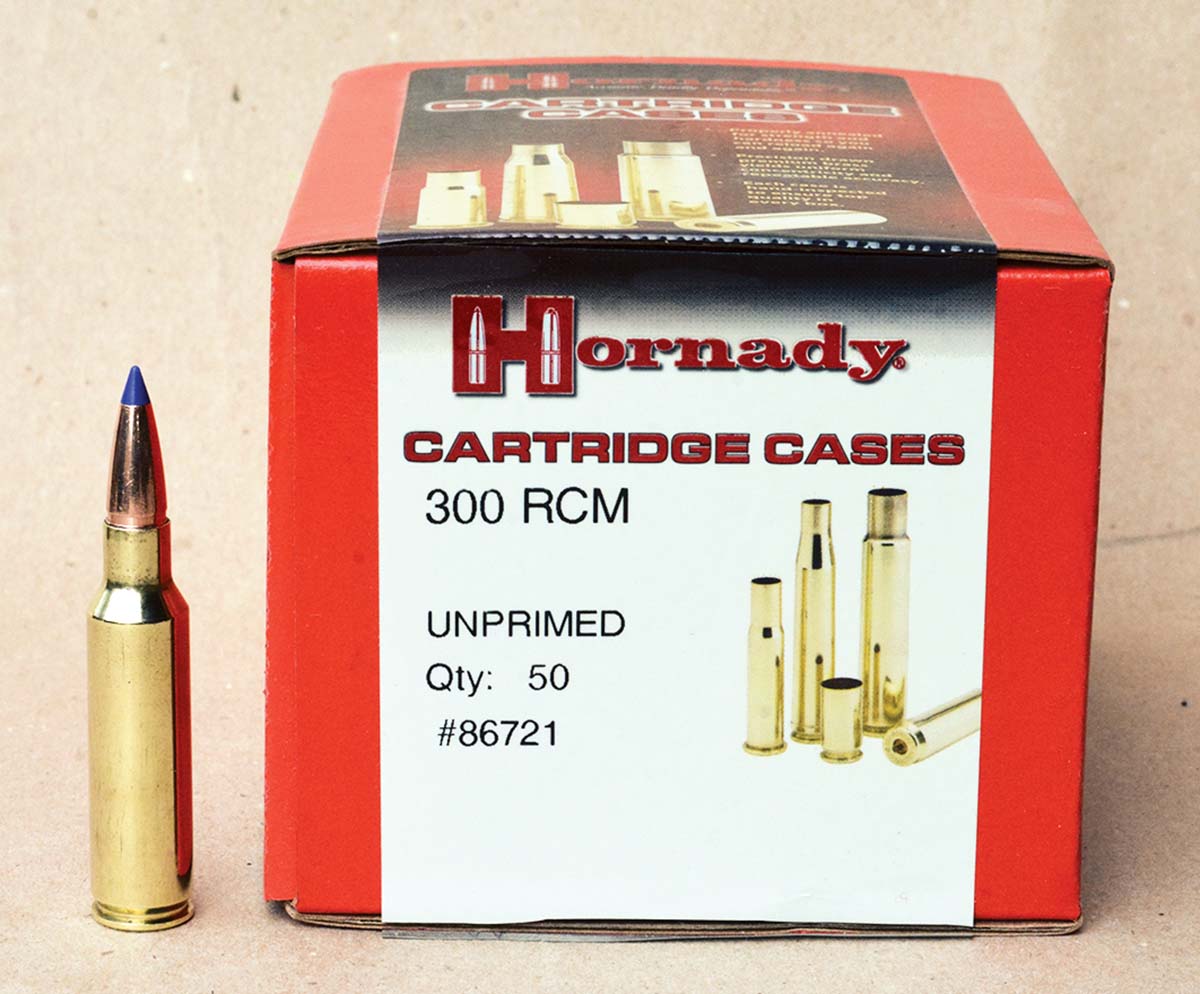
The RCM was unique because Ruger rifles were primarily fitted with 20-inch barrels, which limited velocity, but the cartridge was designed to utilize less powder and to eliminate the feeding problems that occurred with some WSM and RSAUM implementations. Hunters who hunt in brush, from horses, or who still need long-range potential appreciated the compact, short rifles the RCM enabled. The RCM arrived as interest in short magnums was beginning to wane, so its popularity was never widespread, but it remains a good cartridge.
The drawbacks of the short magnums include limited powder capacity; heavy, long-for-caliber bullets seat deep and use up powder capacity, which is why they are not commonly used with bullets exceeding 180 grains. Feeding problems occurred from time to time – primarily with the WSM and RSAUM (but not the RCM) – in both push-feed and controlled-round feed actions. Tolerance issues with case-neck thickness caused handloaders some headaches. Today, only the WSM is offered in a few select rifles, but all three cartridges are worthy choices if you are willing to shop for a pre-owned rifle.
30 Nosler (2016)
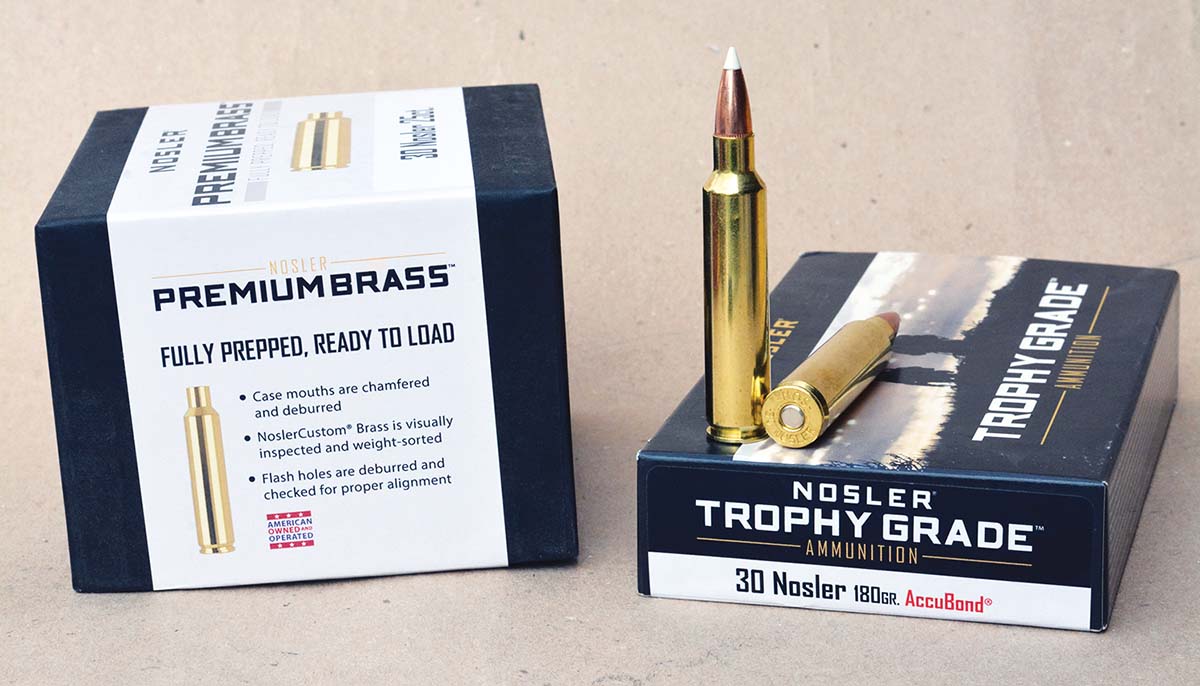
Not long after the introduction of the super-flat-shooting 26 and 28 Nosler cartridges, Nosler introduced the 30 Nosler in 2016. It was based on the 300 RUM case but shortened to work in 30-06 length actions and has an overall cartridge length of 3.340 inches. The shoulder angle was changed from 30 to 35 degrees to aid efficient powder burning in the chamber and to reduce throat erosion. Powders were carefully selected to maximize performance; factory loads commonly list various 180-grain bullets at about 3,200 fps and 200- and 210-grain bullets at about 3,000 fps. The barrel twist rate is commonly 1:10 inches to stabilize a wide range of bullet weights and styles from 150 to 220 grains, and is suitable for many of the modern super high BC bullets. This combination makes the 30 Nosler an outstanding all-around hunting cartridge capable of taking large game such as moose and big bears at close range with heavy, deep-penetrating bullets, or making a very long shot on a trophy buck or elk with a super highBC bullet.

300 Precision Rifle Cartridge (2018)
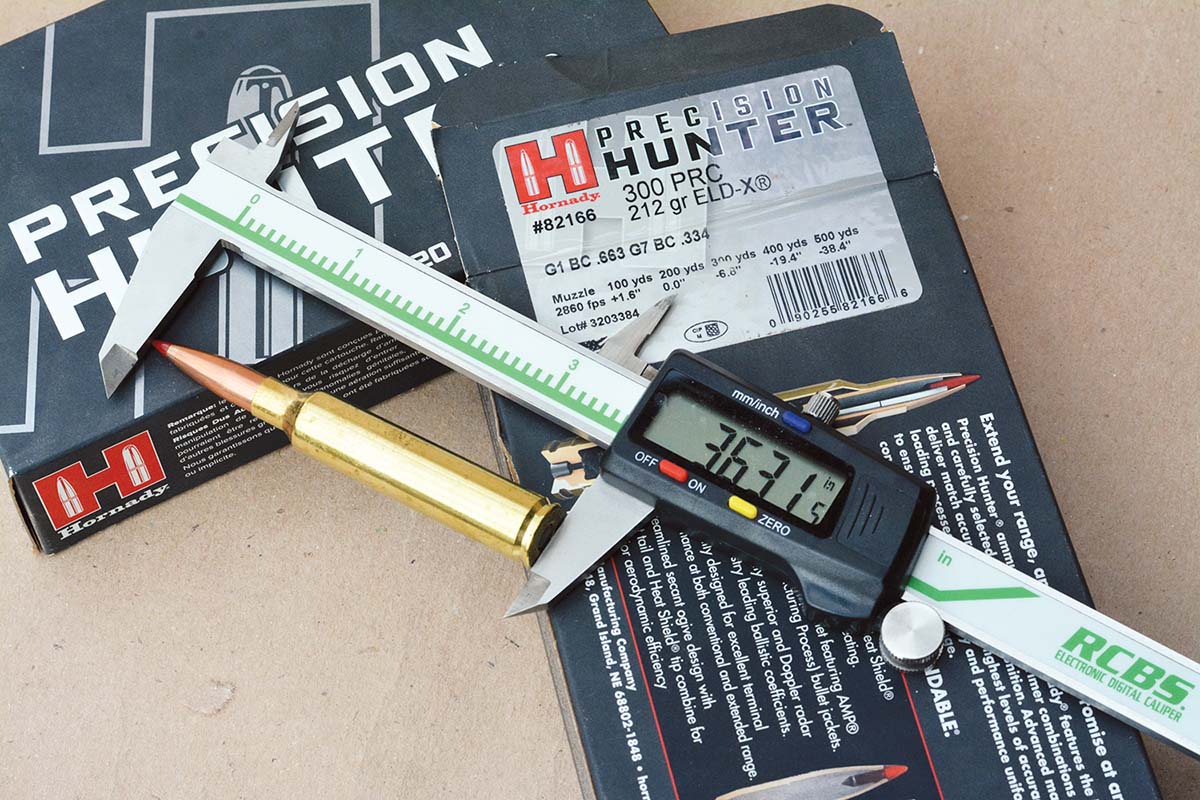
Hornady developed the 300 Precision Rifle Cartridge (PRC) in 2018. It is based on a necked-down 375 Ruger case with a case length of 2.580 inches and an overall length of 3.700 inches, requiring a long magnum-length action (375 H&H length plus). The case head diameter matches the belt diameter of the H&H magnum case, giving it large capacity, and the rim is the same diameter as the head at .532 inch, so it can be chambered in standard magnum bolt faces. The shoulder is 30 degrees. The PRC was
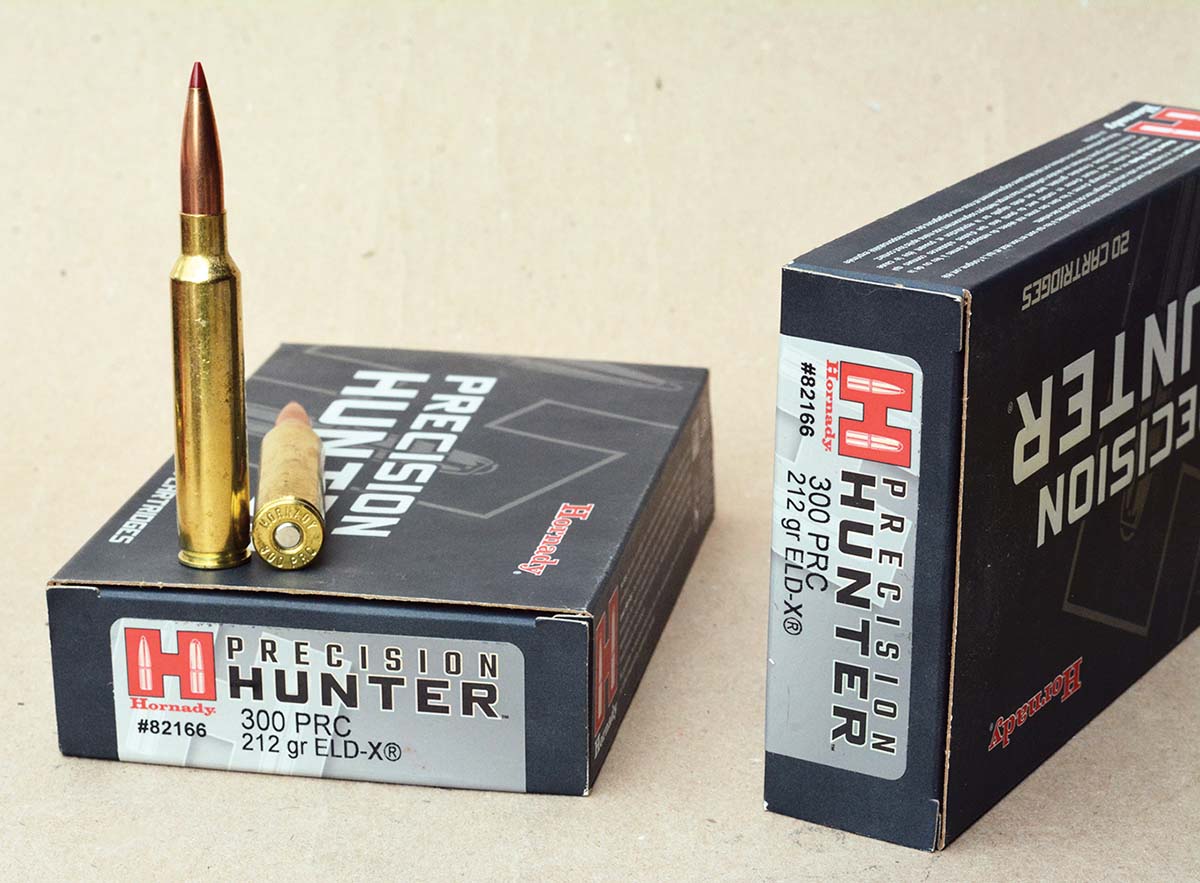
designed to seat heavy-for-caliber, long, high BC, low-drag bullets out close to the leade to maximize accuracy while preserving powder capacity, which explains its long overall length. Hornady lists a 212-grain ELD-X at about 2,860 fps and a 225-grain ELD Match at about 2,810 fps. To stabilize these heavy, long bullets, the standard barrel twist is 1:8.5-inch. The PRC is designed primarily for extreme long-range shooting and is less than ideal if light-for-caliber bullets are used. Since its introduction, and driven by long-range shooting trends, the PRC has grown steadily in popularity and is in high demand.
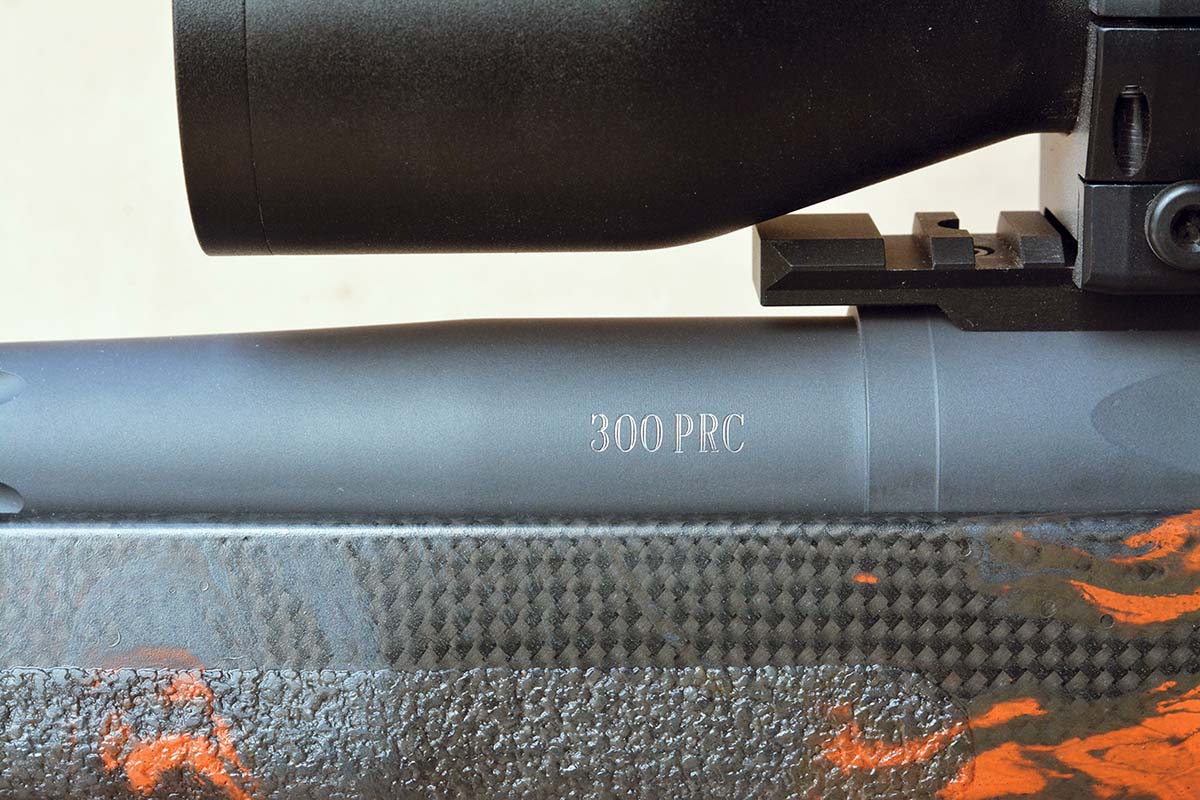
With more than a century of history and development, today’s .30-caliber magnums are truly remarkable cartridges that offer extreme versatility. They are suitable for most large, thin-skinned game, excellent for super long-range target work, and still offer manageable recoil. Quality rifles and ammunition are readily available at blue-collar prices.


